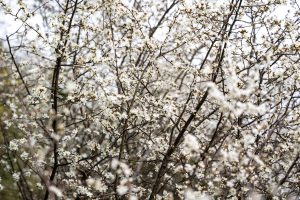Threats to existence of Turtle Doves and Grey Partridge
Figures from a Government report into the population of wild birds provides cause for concern.
Coupled with one of the worst breeding seasons in generations, some species of wild birds are faced with immediate threats to their existence – and top of the list are the Turtle Dove and the Grey Partridge.
With its distinctive appearance, the turtle dove can typically be found in woodland edges, hedgerows and around open land with scattered bushes – but it is likely to be a rare sight this summer as its breeding season has been severely hampered by a shortage of seeds and grains.
Consequently, the species is now included on the Red List of conservation concern.
In fact, wild bird indicators show the number of turtle doves in the UK has plummeted in the last five years to around 14,000 pairs – a startling drop of almost 60 per cent.
Additionally, the Grey Partridge population has fallen by 30 per cent over the same period, with only 43,000 pairs to be found. Typically found in lowland arable areas of the UK, this medium-sized game bird has also been added to the Red List.
With six out of ten Turtle Doves and three out of ten Grey Partridges lost over the last five years, it’s clear to see, unless something is done, there’s an imminent disaster on the horizon – and the threat of extinction is hovering closer.
However, a three-year project initiated by the RSPB, Conservation Grade and Pensthorpe Conservation Trust, has been implemented to help farmers help turtle doves.
Operation Turtle Dove – thanks to European funding paid to farmers to “put nature back into the countryside” – seeks to provide the seed-rich habitats these birds thrive on. Over recent years these areas have dropped due to the decline of plants crucial to the growth of turtle dove numbers.
The help of schemes like this has resulted in an increase in numbers for the Grey Partridge and Turtle Doves – but their rapid decline is still a cause for concern.
Nonetheless, if the small increase in numbers is to progress, it is crucial the funding given to farmers to provide hospitable surroundings for all types of wild species continues.
Coupled with one of the worst breeding seasons in generations, some species of wild birds are faced with immediate threats to their existence – and top of the list are the Turtle Dove and the Grey Partridge.
With its distinctive appearance, the turtle dove can typically be found in woodland edges, hedgerows and around open land with scattered bushes – but it is likely to be a rare sight this summer as its breeding season has been severely hampered by a shortage of seeds and grains.
Consequently, the species is now included on the Red List of conservation concern.
In fact, wild bird indicators show the number of turtle doves in the UK has plummeted in the last five years to around 14,000 pairs – a startling drop of almost 60 per cent.
Additionally, the Grey Partridge population has fallen by 30 per cent over the same period, with only 43,000 pairs to be found. Typically found in lowland arable areas of the UK, this medium-sized game bird has also been added to the Red List.
With six out of ten Turtle Doves and three out of ten Grey Partridges lost over the last five years, it’s clear to see, unless something is done, there’s an imminent disaster on the horizon – and the threat of extinction is hovering closer.
However, a three-year project initiated by the RSPB, Conservation Grade and Pensthorpe Conservation Trust, has been implemented to help farmers help turtle doves.
Operation Turtle Dove – thanks to European funding paid to farmers to “put nature back into the countryside” – seeks to provide the seed-rich habitats these birds thrive on. Over recent years these areas have dropped due to the decline of plants crucial to the growth of turtle dove numbers.
The help of schemes like this has resulted in an increase in numbers for the Grey Partridge and Turtle Doves – but their rapid decline is still a cause for concern.
Nonetheless, if the small increase in numbers is to progress, it is crucial the funding given to farmers to provide hospitable surroundings for all types of wild species continues.


